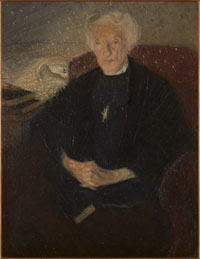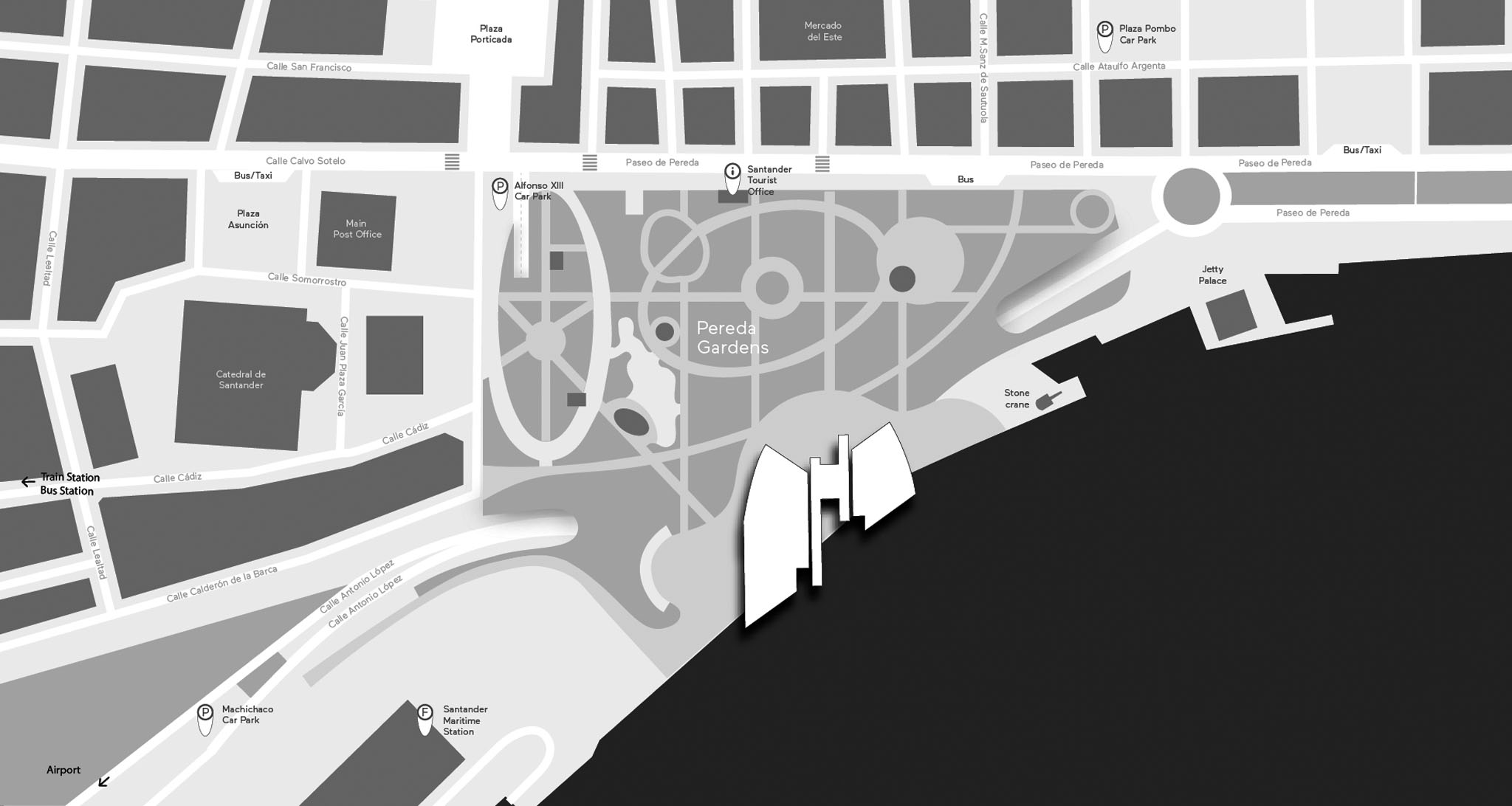Francisco Gutiérrez Cossío Portrait of my Mother

Retrato de mi madre, 1942.
Oil on canvas. 105.5 x 79.5 cm
In my opinion, this portrait of the artist’s mother is the most accomplished of the portraits that Cossío made. It is unquestionably the one with the deepest perception that conveys the most feeling. It shows the very unique creative power from the painter’s hallmark mature style. The resources he used, in this case with incredible economy, are enough to achieve an extraordinarily rich, vital result. The painter used precise, sober means in his work are, and yet they have an expressive ability to create a vivid play between the contrasting extremes in the scene: the massive and the lightweight, the inert and the vibrant, and the light and restless particles on the passive continuum of the surrounding dimness. The undefined darkness of this painting is enhanced by the monotonous, uniform zones of the dark red of the armchair and the black of the sitter’s dress. The delicate unsteadiness of her face and hands, with their nuanced pinkish and orangey tones in varying degrees of transparency, stand out over this simple structure.
The light portrayed in this way is peculiar and yet common in the painter’s works from this period: an invasion of floating corpuscles over the scene. In this work, they seem to be descending from on high and absorbed by the continuous black of the underlying base. In both this painting and in others that use a similar technique, the aerial stratum of this shower of light hints at a penetrable curtain and an enveloping air outside the painting that gets the spectator involved.
His mother’s face is clearly drawn, delimited by lines around the perimeter that shape it and a few strokes that model and subtly define her expressive facial features; her eyes and their sockets, her lips, her nose, her cheeks. Tiny incisions suffice to provide relief and outline the somewhat blurred volumes of the soft modelling of her head and hands. The fine, all-white hair that almost seems hollow in its obvious lightness is not clearly outlined either.
The expressive subtleties in the small lights in the face and hands are toned down by the serene anchor of the red armchair and the table with books on it. The book on her lap, which has fallen from her hands, hints at reading and time spent doing it. Her hands are clasped and close with her arms, which are concealed in the black sleeves, insinuating the outline of a larger curve, a chain-like necklace which runs around and distantly haloes her face in the upper centre of the painting. Cossío’s works frequently contain these large, tense curves that impel or contain energy, and sometimes these forms belong to identifiable figures like boats, fish or fruit. The play of certain contrasting effects that we see here in this portrait also appears in the painter’s still lifes, where certain simple configurations are contrasted, like the oval of a table with the animation of specific elements, like porcelain, glass goblets and fruit, expressed in the very fluctuation of the transparencies and reflections.
In the portrait of his mother, Cossío has depicted an attentive gaze at an undefined background. That gaze is lit up by the very bright glimmer of her eyes. These glimmers are akin to the universe of light activated in the omnipresent floating particles. Those two intense points of light seem to be the origin that sustains and feeds the shower of light blanketing the entire painting, so we can say that this luminous powder is also an eloquent expression of an existence shown in the scene. The face reigns there, in that place that condenses a now quietened time of life.
Juan Navarro Baldeweg, architect, painter, writer and great admirer of Francisco Gutierrez Cossio.

